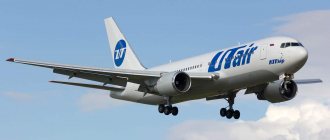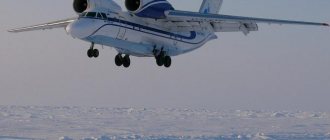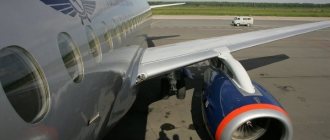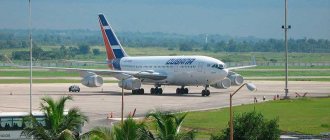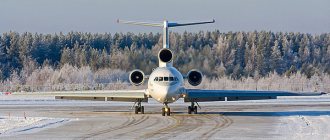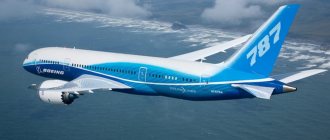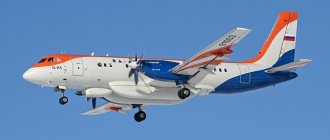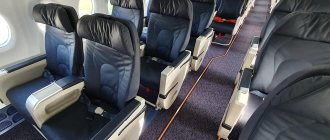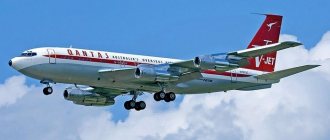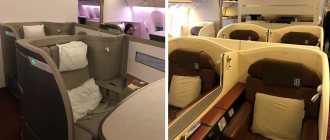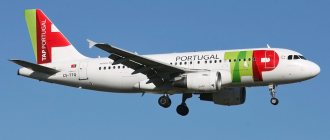The main development of Russian aviation began in the middle of the last century, back in the former Soviet Union. One of the leading experts in this field was designer O.K. Antonov. It was in his bureau that the first experimental model of the AN-24 aircraft appeared, which was then mass-produced by aviation factories in Kyiv, Irkutsk and Ulan-Ude. This aircraft model is also produced in China under the name Xian Y-7.
The brainchild of O. Antonov
Short story
The development of a new machine designed to operate on domestic airlines began at the Antonov Design Bureau in 1958. The basis for starting work was, as was customary in the USSR, a resolution of the Council of Ministers, which was issued at the end of the previous year. The decree stipulated the vehicle's carrying capacity at 4000 kg with a flight range of at least 400 km in cruising mode.
The power plant was supposed to be two engines of the AI-24 model. The new aircraft was supposed to replace the Il-14 airliner, equipped with a piston power plant.
The creation of the machine, designated An-24, proceeded at an accelerated pace. Already in the fall of 1959, the first flight of the prototype took place, and two years later the aircraft was presented for official testing. After their successful completion, the car was recommended for mass production, which was carried out at aircraft manufacturing plant No. 473, located in Kyiv.
The first production samples were built in the winter of 1962.
After a short procedure of mastering by the flight crew, operation of the An-24 began. The first commercial flights were conducted on the Kyiv-Kherson route in the fall of 1962. The following year, active operation of the vehicles began on the routes between Moscow and Saratov, as well as Voronezh.
Production of the An-24 continued until 1979; the bulk of the vehicles were assembled by the Kiev plant. A total of 1,200 aircraft were produced, plus an unknown number of aircraft were built under license in China under the designation Xian Y-7.
Chinese cars could be equipped with Pratt&Whitney engines. Such options were supplied for export. On the basis of the An-24, the An-26 military and civilian transport aircraft was created, which continues to be actively used by the air forces of almost 30 countries.
Description of design
Structurally, the An-24 passenger aircraft is a monoplane with a wing located along the upper edge of the fuselage. The fuselage is constructed entirely of metal in a semi-monocoque design. The set consists of beams and stringers. The fuselage consists of three sections, which are joined by skin sheets. If repairs or replacement of sections are necessary, the fuselage is disassembled.
The first two sections are sealed as they house the cockpit and saloon. In addition, there is a wardrobe and a bathroom in the fuselage. There are special compartments designed for transporting luggage and cargo. The standard passenger cabin seats 48 passengers.
The seats and partitions have a removable design, which allows you to quickly convert the An-24 aircraft into a transport version.
The wing consists of two parts, rectangular and trapezoidal in shape. The center section of the wing is equipped with a flap; an additional flap is installed on a rectangular section. The outer parts of the wing are carried by an aileron consisting of two sections. The wing skin is metal, of variable thickness. Inside the wing there are tanks and mechanization drives.
The An-24 aircraft is powered by turboprop engines of the AI-24 or 24T model. They rotate four-bladed variable-pitch propellers of the AB-72 or 72T models according to the engine.
The An-24RV aircraft are equipped with an additional RU19A-300 turbojet engine, intended for use in all flight modes. The generator installed on it can be used as a backup DC voltage source.
The engines are equipped with individual oil systems. When the engine is running, oil circulates in a small circle, bypassing the oil tank. The liquid is used to lubricate the internal combustion engine, control the propeller and adjust the operating parameters of the power plant. The normal capacity of each system is 62…64 liters of oil.
The An-24 hydraulics consists of a main and backup system.
The landing gear control mechanisms, front wheel control, wheel brakes, and flap mechanics operate from hydraulic drives.
The liquid is supplied by pumps mounted on the engines. Hydraulic accumulators are installed in the mains, which reduce the operating time of the pumps. In case of failure of the main pumps, the oil is pumped up by an electric pump.
The fuel supply is located in four soft-type fuel tanks and two caisson tanks. The tanks are located symmetrically in the plane of the half-wing. It is possible to install additional soft tanks designed to increase the flight range. Each engine is connected to its own group of tanks, but all tanks are connected to each other in a ring equipped with a tap.
The An-24 chassis includes two main struts and a nose gear equipped with a steerable double wheel and a ground towing device. The main struts are retracted into niches made in the engine nacelles. These racks are equipped with a pair of wheels and disc brakes.
To operate the automatic braking system, inertial sensors are installed in the racks. The design of the front support does not provide brakes. All racks are equipped with a gas-oil type shock absorption system.
To combat ice, hot air is supplied and surfaces are heated with electric current.
Hot air is taken from the engine compressors. The nose parts of the wing and air intakes are heated with air. The propellers, cockpit windows, air pressure sensors and a number of other elements are equipped with electrical heating.
The electrics of the An-24 aircraft are equipped with a single-phase and three-phase current system (115 and 36V, respectively, at 400 Hz), as well as a constant voltage network (27V). The 115V voltage sources are generator sets located on distribution gearboxes and engines. Converters are used to generate a 36V voltage.
Direct current is generated by engine starter generators, which is a design feature. The list of electrical equipment and installed models of generators and converters may differ depending on the aircraft production date.
Cabin
In the front part of the cockpit of the An-24 aircraft there are seats for the commander and co-pilot. Behind them are the seats of the navigator, on-board radio operator and flight mechanic (in the center). The commander and pilot seats are equipped with stationary oxygen masks.
The vehicle can be controlled from both pilot seats.
The elevators, directions and ailerons are equipped with mechanical drives. In this case, the left aileron trimmer is equipped with a fly-by-wire control. A servo compensator is used in the rudder control circuit. The flaps are hydraulically operated.
The cabins are equipped with an air conditioning system that uses compressed air taken from the 10th stage of the compressor of each engine. In the parking lot it is possible to connect a ground installation.
Salon
The interior layout of the An-24 is built according to a two-row layout with a central aisle. Each row consists of double seats. The last row closest to the aisle had two designated seats. Two more allocated passengers were located at the beginning of the cabin opposite the emergency exit. There is an additional emergency hatch in the center of the cabin.
Flight attendant seats are located at the beginning and end of the cabin. There is a cargo door between the cockpit and the cabin. The entrance to the cabin is through the aft part of the fuselage, where the luggage door is also located. Passengers are provided with several portable oxygen devices located in the cabin.
Comfortable and inconvenient places
According to the presented diagram, you can consider in detail which places are the most convenient and which are the opposite. It must be taken into account that any seat in each row will be quite noisy, since the aircraft is old. However, there are places with the least noise levels.
Seats in the cabin, their description and comfort:
- Rows numbered 10, 11 and 12 are located in the rear of the cabin. There is also a toilet and a kitchen there, which can cause anxiety for passengers sitting here. Extraneous odors and noises will be felt, and this causes discomfort. There may be queues to get to the toilet. People sitting at the aisle will be constantly disturbed by passengers going to the toilet and crew serving in-flight meals. It is not recommended for passengers with children to sit in these rows, as the child may become capricious. Another disadvantage of seats in the rear rows is the increased feeling of turbulence and high vibration.
- The 12th row is the last; the seats may not recline completely or at all, since there is a partition at the rear. However, the rows at the end of the fuselage have their advantages because, due to their distance from the engines, they are the least noisy.
- Rows four through eight are the noisiest because they are located directly under the wings with the engines attached to them. The wings and engine block the view. It is not recommended to take seats by the windows for lovers of landscapes and those who want to take beautiful shots.
- The second and third rows are comfortable for travel, you just need to keep a few things in mind. If you need to relax quietly, it is recommended to choose seats near the windows, then you will not be disturbed by neighbors who need to go out. Also, these seats are suitable for those who like a good view, because there is nothing that prevents you from admiring the views from the window.
- The first row can safely be called the most comfortable, since it provides the greatest amount of free legroom and the absence of front-seat passengers. In front of the row, at a fairly large distance, there is a partition that separates it from the technical rooms and the pilot’s cabin. Recommended for traveling with a child, the availability of free space allows you to put a stroller here.
- The rest of the places are standard and do not have any special pros or cons.
Photo of the interior of the An-24 aircraft from the inside
Note! Due to the small number of seats and limited choice of the most comfortable seats, it is recommended to book tickets in advance.
Many years of use of the airliner allowed passengers and crew to test the aircraft for strengths and weaknesses and convenience for travelers through the personal experience of passengers and crew. Subsequent releases of various modifications made it possible to modernize and improve the vessel, if not to perfection, then to a quite good level of comfort for voyages. The ability to fly to remote regions without suitable runways made it indispensable for regions of the Far North, where climatic conditions do not allow the use of ships from another manufacturer.
The ship's interior has proven itself quite well over many years of use; it is spacious and practical, but has long been outdated. The lack of outlets for charging mobile devices and entertainment systems makes the flight monotonous. The paired seating arrangement reduces the need to disturb neighbors to access the central aisle. For those who like to take photos for social networks, window seats are suitable, but you must choose the first rows so that the wings do not interfere with your view. Passengers with children are recommended to choose the first row due to the large free space. It is definitely not recommended to book seats in the last rows, since these seats are associated with many inconveniences; passengers there will be accompanied by constant noise and queues for the toilet. It is also advisable if you have a large amount of hand luggage to occupy the luggage racks as quickly as possible, since the number of places there is limited.
Modifications
The An-24 aircraft served as the basis for several dozen modifications, built both in single copies and in large series. The first large-scale version was the An-24A, manufactured in 1962-63 with a circulation of 200 copies. The car had a cabin for 44 passengers, which was considered insufficient.
The An-24B version could carry up to 52 people and had an increased carrying capacity; the aircraft became the most popular version - 400 aircraft were built since 1964.
The An-24D variant remaining in the project was supposed to transport 60 people over a distance of at least 2,700 km. There was an An-24K project, which was a company car with a cabin for 18 people. For army needs and transportation of military personnel, a transport version of the An-24RT aircraft was built, distinguished by the installation of an additional jet engine.
The car has been built in Irkutsk since 1969; 62 cars were assembled in three years. Another variant of the transport aircraft was designated An-24T. The vehicle was distinguished by enlarged cargo hatches on the sides of the fuselage. The modification was produced by the same Irkutsk aircraft plant; a total of 164 copies left the factory gates.
There were developments in equipping the vehicle with four AI-25 engines. The project was designated An-50, work on it was carried out in the early 70s. Around the same time, the An-44 was being developed with a large cargo hatch on the left side of the fuselage. Not a single metal project was implemented.
Specifications
The comparative table below shows that the Soviet An-24 aircraft was not inferior to foreign aircraft of similar purpose and size. The disadvantages of the domestic aircraft include a large crew and a reduced flight altitude compared to analogues.
| Parameter | An-24 | Handley Page Dart Herald | Fokker F27 |
| Manufacturer country | USSR | Great Britain | Netherlands |
| Length, mm | 23530 | 23100 | 25060 |
| Wingspan, mm | 29200 | 28900 | 29000 |
| Height, mm | 8320 | 7300 | 8720 |
| Crew, people | 5 | 2 | 2 |
| Capacity, persons | 52 | 56 | 56 |
| Flight speed, km/h | 460 | 445 | 518 |
| Flight range, km | 1850 | 1750 | 1826 |
| Ceiling, m | 7700 | 9052 | 9000 |
Over the years of operation, 162 An-24 type aircraft were destroyed in accidents. For the Dutch F27, this figure is even worse - out of 793 aircraft built, 183 aircraft were lost as a result of flight accidents.
As for the British car, it was built in an edition of only 50 copies and was discontinued by 1968.
An-24 Engine. Dimensions. Range of flight. Practical ceiling. Story
The active development of domestic aviation began in Soviet times. Then gas turbine engines for aircraft appeared. This prompted the country's leadership to order the Antonov Design Bureau for a new generation military transport aircraft, which was given the name AN-24. However, priority was still given to passenger airliners. The first twin-engine turboprop passenger aircraft, the An-24, was created more than fifty years ago. It was intended to transport people on short-distance domestic routes.
A trace in the history of aviation and culture
The long-term operation and recognition of the An-24 aircraft became the reason for the installation of decommissioned aircraft as monuments in a number of republics of the former USSR. Some of the cars are used as makeshift cafes. The An-24B aircraft installed in the village of Kon-Kolodez (Don highway) is partially “implanted” into the cafe premises. Moreover, the car is painted in Aeroflot colors.
Various modifications of the An-24 appeared in the films “Confrontation” (filmed in 1985), “Taming the Fire” (1972), “24-25 Doesn’t Return” (1968) and many others.
Manufacturers of scale models have not spared the aircraft either. During the Soviet era, a popular aircraft model was produced by VebPlasticart (GDR), complete with colorful decals and paint. Currently, the model has become a rarity.
Photo gallery
Antonov An-24
An-24
An-24 aircraft in 1964
Photo of An-24RV Russian Navy
Photo An-24RV
An-24 of the Ukrainian Armed Forces
An-24 aircraft of North Korea
Photo of the An-24 interior from UTair
An-24RV operated by UTair
An-24B produced by UTair
An-24 operated by UTair
An-24 TsSKB Progress
An-24
An-24
